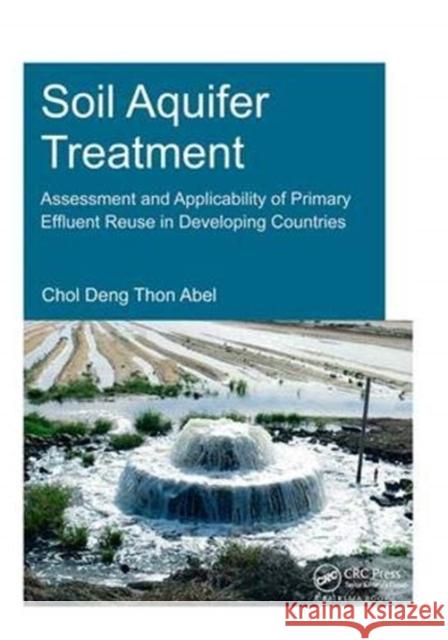Soil Aquifer Treatment: Assessment and Applicability of Primary Effluent Reuse in Developing Countries » książka
Soil Aquifer Treatment: Assessment and Applicability of Primary Effluent Reuse in Developing Countries
ISBN-13: 9781138373242 / Angielski / Twarda / 2018 / 212 str.
Soil Aquifer Treatment: Assessment and Applicability of Primary Effluent Reuse in Developing Countries
ISBN-13: 9781138373242 / Angielski / Twarda / 2018 / 212 str.
(netto: 517,70 VAT: 5%)
Najniższa cena z 30 dni: 503,69 zł
ok. 16-18 dni roboczych.
Darmowa dostawa!
Climate change, rapid population growth and urbanization are causing water shortage and pollution, especially in arid and semi-arid regions of the world due to the growing demand in different sectors and disposal of inadequately treated wastewater to water bodies. To tackle these challenges, further treatment and reuse of wastewater effluent using soil aquifer treatment (SAT) is an attractive cost-effective and environmentally friendly option that is employed with no intensive use of electricity and chemicals.This study highlights the prospects of using SAT for treatment and reuse of primary effluent (PE), especially in developing countries where wastewater is not treated to secondary and tertiary effluent levels due to lack of investment and operation costs to run sizable wastewater treatment plants (WWTPs). Coupled with experimental studies that show SAT efficiency to remove suspended solids, bulk organic matter, nutrients and pathogens indicators from PE, the thesis provides step-by-step tools that could be used for development of new SAT scheme. Furthermore, the study provides a water quality prediction model that estimates the potential contaminants removal which could be used to assess the need for reclaimed water post-treatment.This thesis is envisaged to contribute to the current knowledge on the necessity of water reuse.











